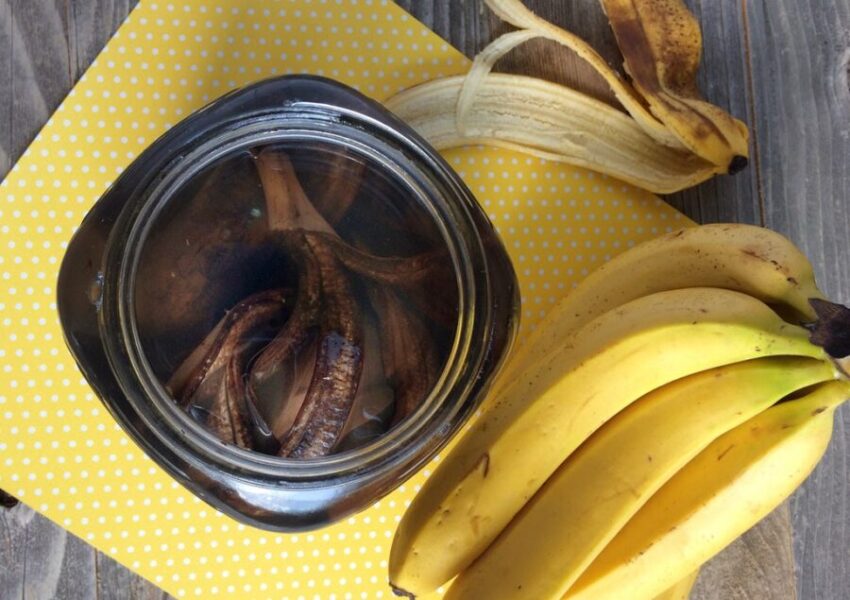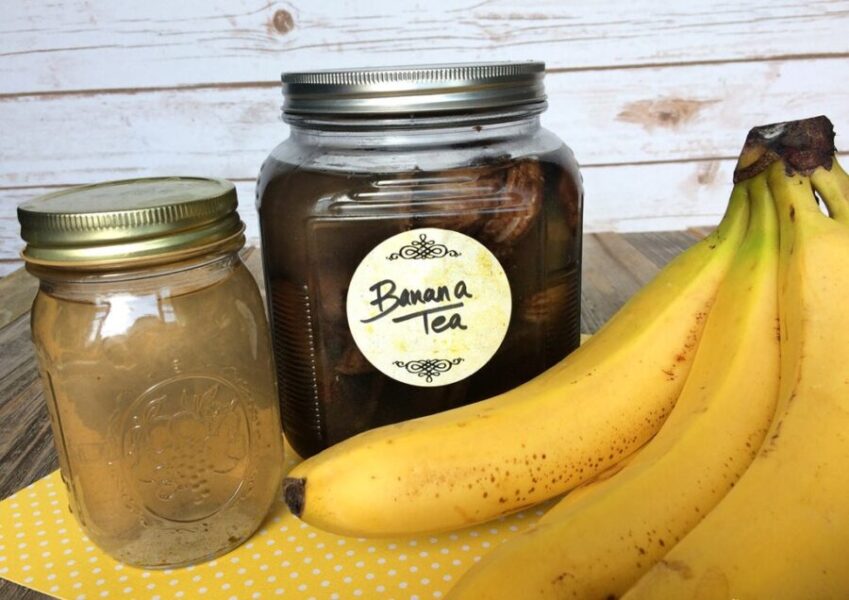
As anyone who has watched “Back to the Future” a million+ times knows, banana peels make terrific fuel. But even better than adding them to the Mr. Fusion unit on your time traveling DeLorean, you can add them as fuel for your garden. That’s right, compost those slimy banana peels and make your little green friends happy!

Banana Peel Nutrients
Bananas are a super food, and the peels are loaded with nutrients that your vegetation craves. First and foremost of these is, of course, potassium. Potassium greatly helps your plant’s overall strength. It makes the cell walls more robust on the fruit. I also helps generate stronger plant stems and promotes healthy root development.
Phosphorus has the next highest mineral concentration in banana peels. That’s great, because your garden loves phosphorus! Phosphorus is vital for vigorous plants. It aids germination, healthy roots, and strengthening production of blooms, pollen, and fruits.
Not to be forgotten, peels also contain calcium and magnesium. These are important in your garden’s healthy development. Banana peels do NOT contain nitrogen. But the calcium helps make nutrients in the soil, such as nitrogen, more available to plants.
How to Make Banana Peel Fertilizers

How do you transport all those amazing nutrients from your kitchen to your garden? You can individually chuck banana peels on your garden or make a compost tea or a dry fertilizer.
A week before I plant my tomatoes, I save all of my banana peels by storing them in a container of water in the fridge. Then when it’s time to plant, I add a banana peel to every tomato hole. You can also use the leftover water as a compost tea to water your garden.
Banana peel compost tea is simple to produce. Keep a pitcher of water in your fridge filled about 3/4 full. Whenever you eat a banana, deposit the peel into the pitcher. Keep up this process until the container is full (or after about a week). Then strain the liquid into a new container. Put the peels aside, you can still use them in your garden! Clean the pitcher out and start the exercise all over again. The tea is nutrient-rich because the liquid has been slowly leeching Potassium, Phosphorus and nutrients out of the peels. In this form it is too concentrated, so you need to dilute it before putting it on your garden. One cup of tea per gallon of water should do the trick. Apply to the base of your garden plants and watch them thrive.
Okay, so you’ve made your pungent tea and now you have a bunch of slimy-gross banana peels leftover. That’s great! Take those peels and make more food for your plants! The easiest way would be to toss the peels into your compost bin. But if you want a quick fertilizer, put the peels into your blender with some water to make a puree fertilizer. Or you can try the powdered banana peel route so you can use them later. Use a food dehydrator to dry the peels (usually about 8-10 hours at 160ºF). Or place them on a parchment paper lined cookie sheet and bake them in the oven (extra low temperature) for about 8-10 hours. You can also let them bake in the sun. Once they are dry, chop them as fine as possible in a food processor or coffee grinder. Then you can add some PBP (powdered banana peel) to your new seeds or seedlings when you are planting.
How to Use Banana Peel Fertilizers
Add one cup of banana tea per gallon of water. Apply to the base of your garden plants and watch them thrive. Add some dried banana peel (powdered or cut pieces) to your new seeds or seedlings when you are planting. Some gardeners also use fresh banana peels in their garden. Burying them deeper around plants will help keep animals and pests away. The peels break down quickly, so plants are able to use the nutrients sooner. Just make sure the soil is moist so the peels can break down.
Banana peels are not a complete fertilizer! So don’t use them alone, especially if your plants need a lot of nitrogen. They work great for potassium-loving plants like tomatoes and peppers. To get the most out of peels, compost them with nitrogen-rich materials.
Use Banana Peels as an Aphid Pest Repellant
Banana peels are also helpful for deterring aphids on plants. Aphids hate the smell of banana apparently. While adding peels around plants should help deter aphids, spraying a plant with the tea should help protect it more. Dilute the banana tea with water at a 5:1 ratio (5 parts water with 1 part tea). Spray the leaves and stems with the solution. The spray will also help feed your plants.
